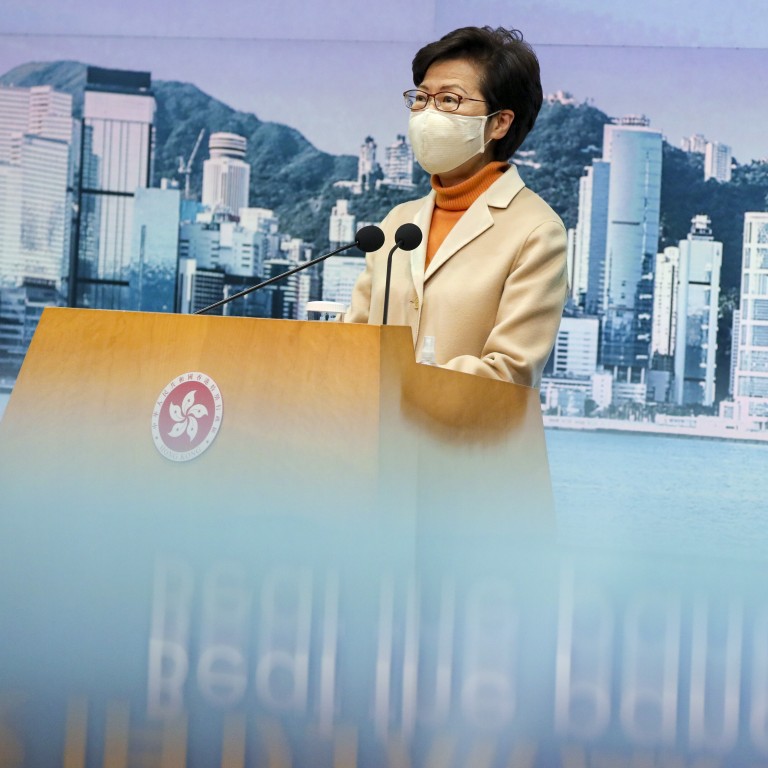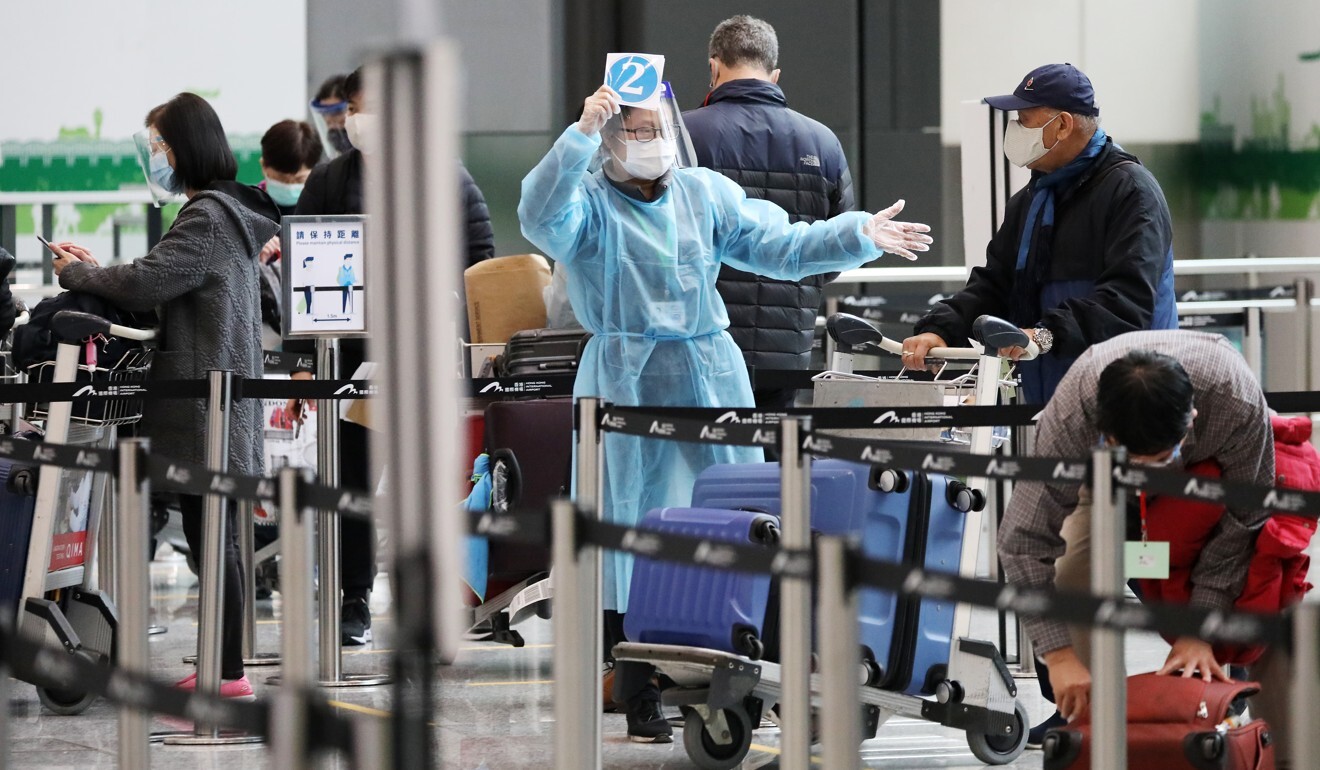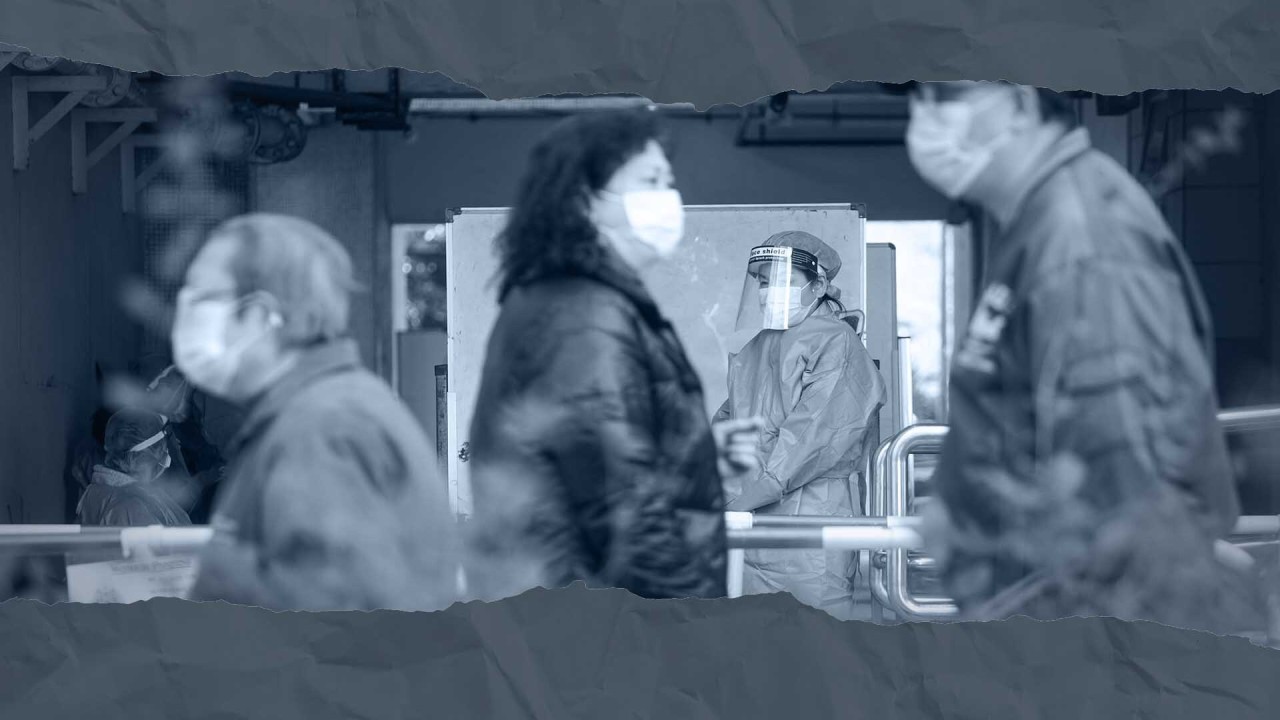
Hong Kong fourth wave: city to launch ‘new command centre’ to ramp up Covid-19 contact tracing, while Carrie Lam admits past shortcomings
- A government insider says the new centre will be staffed by hundreds of officials from the police force, customs, immigration and other departments
- City leader Carrie Lam says while Hong Kong has done well with testing, quarantine, ‘tracing of close contacts of confirmed cases could have been done better’
The plan for the new centre was finalised at a meeting chaired by the city’s No 2 official and drew lessons from mainland China, sources said on Tuesday. With the expanded monitoring, the government hoped to map out the movements of possible carriers and uncover sources of silent transmissions to stop additional clusters from arising.
Officials on Tuesday confirmed another 32 cases, with four tied to a cluster that emerged at Princess Margaret Hospital, prompting medical authorities to require any patient admitted to day wards across the city to first undergo a Covid-19 test.
“We are doing quite well currently on the testing, quarantine and isolation front, but the tracing of close contacts of confirmed cases could have been done better,” Lam said. “But that also requires the cooperation of residents … and we will train staff to have better techniques in [chasing] these cases.”
Hong Kong public hospitals to require day-ward patients to undergo testing
Manpower for the command centre, to be housed in a community facility along with hundreds of computers and telephones, would be drawn from the police force, customs, immigration and other departments, a government source said. Some officers from those departments were already carrying out pandemic control work for the Department of Health.
“Between 200 and 300 extra officers from various departments will be pooled in the new centre,” the insider said.
Disciplinary officers would be responsible for calling patients confirmed as infected to identify their close contacts, while clerical staff would input data for executive officers to analyse, the source revealed. The results would be passed to the department’s Centre for Health Protection, which would arrange affected residents to be sent to quarantine camps.
While officers will be deployed in at least two shifts daily initially, staffing levels may be increased if the pandemic situation worsens, as departments such as customs and immigration will have hundreds of workers on stand-by.
Police will continue to use their supercomputer to analyse clusters for the Department of Health, and detectives from regional crime units can carry out any necessary investigations, according to a force insider.

Authorities are currently only monitoring the close contacts of confirmed Covid-19 patients, or about three people on average, but the new approach will expand the number to about 50.
“We will trace the close contacts of the confirmed patients as well as the secondary close contacts of the identified contacts and find out where they had gone during the 14-day incubation period,” the government source said.
The plan was finalised at a meeting on Monday attended by officials from multiple departments and chaired by Chief Secretary Matthew Cheung Kin-chung. The Post understands the idea was inspired by experiences mainland officials shared with their Hong Kong counterparts in Shenzhen last month.
Medical experts have accused authorities of falling behind on tracking at-risk individuals. Professor David Hui Shu-cheong, a government adviser on the Covid-19 response, said contact tracing work had been slow and more dedicated workers were needed.
“Hong Kong doesn’t have sufficient manpower for contact tracing and arranging for quarantine ... there had been a case of death while waiting to be sent for quarantine,” he said.

05:09
What there is to know about the Covid-19 vaccines roll out in Hong Kong
Dr Leung Chi-chiu, a specialist in respiratory medicine, said that while the government’s latest effort came late, as the peak of the fourth wave appeared to have passed, training extra staff could help prepare for any resurgence that followed.
“If there is a fifth wave ... there could be manpower that could provide help at any time.”
Leung also suggested health authorities could carry out repeated testing on contacts other than those deemed close ones, as they were currently not sent to quarantine facilities.
Separately, the Hospital Authority announced that day-ward patients would need to take a Covid-19 test one or two days before being admitted, and people requiring regular procedures, such as haemodialysis patients, would be asked to undergo screening every week. Food services for day wards would also be restricted, with only light meals provided.
The outbreak at Princess Margaret Hospital has grown to include three patients and two staff, while a cluster at United Christian Hospital in Kwun Tong has expanded to 21 patients and staff.
Tuesday’s figures continued a downward trend in the daily caseload and marked the fewest new infections since 26 were recorded on November 20, at the start of the fourth Covid-19 wave.
Supermarkets adopt wider aisles, contactless payment as pandemic forces rethink
Nine of the latest cases were untraceable, while just one was imported, involving an arrival from Switzerland. More than 20 people tested preliminary-positive. The city’s infection tally now stands at 9,049, with 153 related deaths.
Officials are also trying to contain outbreaks at several housing estates, and ordered residents of three more buildings to undergo screening. Dr Chuang Shuk-kwan, head of the Centre for Health Protection’s communicable disease branch, said three more buildings met the toughened criteria for mandatory screening by recording two or more unrelated infections across a two-week period. The new additions were Affluence Garden’s Civic House in Tuen Mun, Lux Theatre Building Block A in Hung Hom and Po Hei Court’s Wing Hei House in Sham Shui Po.



